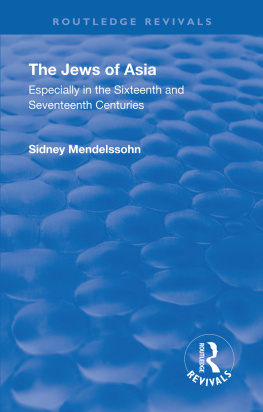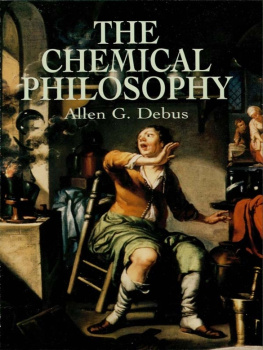Massimo Carlo Giannini
Introduction
During the last 20 years the role of religious orders in the early modern period, both within and without the borders of the European continent, has attracted the growing interest of historians. These religiousparticularly in their functions as missionaries, confessors, and educatorshave become the prism through which scholars have approached questions and problems relating to the definition and diffusion of Catholicism on an international level, the circulation of the knowledge it transmitted, and its encounters with other peoples, societies, and religions between the sixteenth and eighteenth century.
It is not difficult to read in this perspective the questions posed to historical studies by the great events and transformations of the twentieth and twenty-first centuries: economic globalization, international political conflicts, and the ascent of post-colonial countries to the status of world powers. Religious orders have certainly lent themselves to the new questions of current historiography, both because of their tradition of transnational mobility, even precociously global, because in many cases they were the sole documenters of these activities. Today, this documentation, preserved in the general and local archives of the religious orders and the Holy See, represents a unique and precious source for the study of a wide spectrum of religious, cultural, and political problems on a world scale during the period treated by this volume.
We immediately recall the enormous interest generated among scholars by the Society of Jesus. The institution founded by Ignatius of Loyola, as is well known, was so successful that it holds our attention still today. The Society had 35 colleges operating in 1556 at the death of the founder. And in 1773, on the eve of its suppression, there were more than 800, not only in Europe but throughout the then-known world, from Macao (China) to Peru.
It is interesting, moreover, to observe that Hsias book, which aims to provide an image of Catholicism as the first world religion, dedicates a chapter exclusively to the new religious orders that emerged in the six teenth and seventeenth centuries, among which the Jesuits obviously factor prominently. The longevity of this interpretation, hinging on the centrality of the Council of Trent and its application inside the Catholic world, explains why most studies focus on the activities that constituted the new orders specific purposes (charity, missions, preaching, teaching, etc.). Conversely, the monastic and mendicant orders were somewhat neglected. In fact, the historiography for a long time privileged the Middle Ages as their golden period. This was the result of two factors. One was the condemnation by eighteenth-century Enlightenment and jurisdictionalism, and then nineteenth-century liberalism, of these orders as parasitic institutions, merely holders of unacceptable privileges and wealth. The other factor was the negative judgment of Catholic historiography itself, which indicated the monastic and mendicant orders as examples of decadence, incapable of effecting the renewal of the post-Tridentine Church. For its part, the inside historiography of the orders has often assumed, more or less knowingly, a hagiographic and apologetic perspective that reads the past as cyclical with highs and lows of discipline and rule, influenced by a moralistic system, and essentially meta-historical.
For this reason Mario Rosa, one of the most important Italian historians of the Early modern Church, in a rather penetrating synthesis of the history of the early modern European Catholic clergy (published in 2006), observed how the study of religious orders has primarily focused on individual orders and their narrowly national make-up, without offering a comprehensive perspective or promoting interpretations of any significant breadth.
The first historiographic shift emerged in the 1990s with the influence of the concept of social and religious discipline, refined by Paolo Prodi in dialogue with the studies of Wolfgang Reinhard and Heinz Schilling. This concept helped renew debate on ecclesiastical institutions.
This critical revision has also brought into question the traditional view of other religious orders, returning them to the focus of scholarly interest. Numerous recent studies concerning different themes, geographic areas, and chronological ranges, and originating from rather different interests and methodological impetuses, have sparked a profound critical re-reading of the historiographic tradition, indicating the limits of paradigms characterized by erudition, hagiography, and apologetic and self-referential readings of the past.
A common denominator of these new perspectives is the knowledge that the religious orders cannot be studied solely as passive instruments of Roman directives and strategies, but rather, as true laboratories of the politics and Catholicism of old regime society.
In light of these elements the present volume seeks to enrich the picture of current historiography through analysis of the complex relationships between international papal politics and the religious orders of the sixteenth and seventeenth centuries. The authors invited to collaborate have put in focus with diverse methodological viewpoints a series of case studiesaddressing different geographic contexts, from Europe to America and the Middle Eastthat examine the roles played by the religious orders in the international politics of the Holy See. The questions they raise are nuanced in scope. Were the orders mere instruments of Roman directives? Were they in a position to, more or less openly, realise autonomous strategies? In what ways? How did they contemporaneously balance loyalty to the pope and loyalty to the king? What awareness of their own identity did individuals or groups of religious develop amidst the influences of international affairs in such a religiously and politically contentious period?
The answers offered by the essays in this book do not provide a universally valid or all-inclusive interpretive picture. Rather, they underline the extreme complexity of the geo-political, religious, and chronological contexts of the problems. It appears clear, however, that the religious orders of the sixteenth and seventeenth centuries had to interpret papal strategies and directives in international politics in light of a substantial ambiguity . They were at the same time loyal subjects of the pope, but also trusted agents and advisors of princes . They were papal operatives, but were political actors of strategies not necessarily in line with Roman guidelines . Thus emerged a precarious balancing-act, sometimes overt and sometimes latent, between obedience to the pope and obedience to the king; between membership in a universal religious order and individual ties and national origin ; between observance of Roman directives and the need to maintain good relations with territorial authorities.







